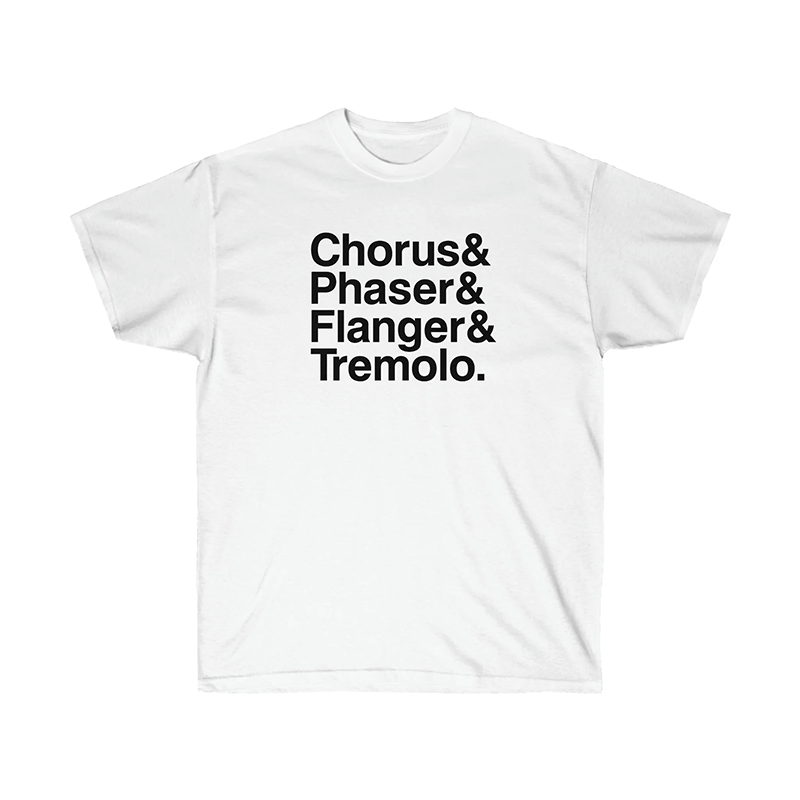(This article comes from our friends at GuitarTricks.com – check out their site for tons of guitar-related tips and tricks!!)
Delay and Time-Based Effects Pedals
By Shawn Leonhardt for Guitar Tricks and 30 Day Singer, the original platform for online guitar lessons.
Whether it uses analog or digital technology, time-based effects units allow us to add more space, an echo, or even loop entire measures. Reverb, delay, and looping pedals all stem from the same basic idea of extending the time of our music. And the settings of these pedals will matter just as much as what you are playing on your guitar. Even for beginner guitar players, delay effects pedals can be a super fun way to change your sound. In this article we will look at different effects and music styles that delays and other timing effects pedals provide.
A Brief History on Delay
Until modern recording, reverb and echo were dependent upon the acoustic instrument body and the space you played in. If you wanted a grand cathedral vibe or an enclosed small venue, it was necessary to play music in these specific areas, we had no way of manipulating the timing of the music. And then once analog technology arrived the sound waves were converted by the pickup and recorded onto magnetic tape, allowing us a chance to alter and double the signal.
People soon found that if you plugged the reel-to-reel tape from the mixer and then back into itself, there would be a slight delay. Or you could double up on reel-to-reel machines and create a slap back delay, which was essential to the overall sound of early Elvis recordings. Reggae artists like Lee “Scratch” Perry also turned their tape machines and mixers into instruments and helped create the genres of dub and early sampling.
This analog method was a pain and took a lot of skill along with trial and error, and famous delay machines like the Roland Space Echo were expensive and cumbersome. Digital technology arrived and made it easier to copy these time-based effects, without all the hassle of magnetic tape. These days the digital delay pedals are so effective that there is really little difference in the final sound, it is up to you if you wish to use analog or digital but both work fine. But be careful, delay can hinder your learning process if still at the beginning of learning how to play guitar.
Reverb Pedals
Analog reverb effects units would use springs or plates so the sound wave could travel along the metal and give it the illusion of more space. Reverb is the same as delay, the only difference is the echo is a lot shorter. In some cases to create large spaces the signal is multiplied to provide many short echoes all at once, this will trick your ears into thinking the distance is larger.
As mentioned in the early days of recorded music, artists would use specific rooms and studios to get the right reverb effect. But now thanks to digital reverb we can emulate that same space by recording it separately and then adding it to our guitar signal. This is known as convolution reverb and modern pedals and software give you a lot of options to choose from. Reverb provides depth, space, and specific vibes, and can sound amazing even on easy guitar songs. If possible, try out different reverb pedals to get an idea of the variety of acoustic fields available.
Delay Pedals
A little bit of echo provides space and depth, a lot more echo gives us delay, a fuller sound, and even more syncopation at times. Bands like U2 are known for using delay in almost all their songs. The great thing about a delay pedal is that it can also give you simple reverb if turned down all the way. Be careful setting your delay pedal to high or the echoes will eventually become cacophonous. If you are shredding guitar, a little extra depth is ok, too much will muddy the solo.
What’s more important than your delay pedal settings, is what you play into a delay pedal. You want to keep your intervals and riffs simple, because echoes can cause overtones and soon they all bounce off one another and it sounds terrible. Keep your intervals and riffs to simple guitar chords when you first start out, and experiment with what intervals work and what don’t. The more complicated the riff is, the more chance a heavy delay will not turn out well.
Looping Pedals
If we keep extending the time of our signal delay, soon we will have the basics of a looping pedal. In the old analog days, engineers would mix tapes with loops and play them on repeat, now digital pedals allow us to do this process much faster. The looping pedal records a riff or a couple measures and then allows for it to be played again and again. The better your looper is, the more riffs and chord progressions you can mix.
Just like the delay pedal, the loop function will take some practice to master proper transitions. You must make sure your timing is just right or the looper will not work, keep your initial recordings simple, that way they are easy to play and riff over. That is one of the best aspects of looping and delay pedals is that they will eventually allow you to play along with yourself as if you were a one-person band. This can be very helpful even when taking early guitar lessons.
Multiple Effects and the Genres Where They Are Used
Many modern boutique pedals mix multiple effects, and the same is true for time-based signal changes. The better your pedal is the more likely you will be able to dial in reverb, delay, and even a loop depending on the length of the echo. Analog pedals will likely have a better old school sound, but they will not allow you as many options as a digital pedal. And of course different pedals can be mixed in a chain, just be aware that the more signals you have repeating and crossing, the harder it is to keep it sounding good. Almost every genre uses some kind of delay in the signal, rock and metal use a little for depth, while ambient and shoegaze have songs that are simply layers of overlapped sound. And many singer-songwriter artists love looping pedals as it allows them to go on stage and handle all the parts on their own. However there are no specific rules on what delay pedal belongs in which style of music, the more acoustic space and echo you need, the more you will turn these pedals up.
Once you decide on some decent time-based effects pedals you can start experimenting with different reverb and delay settings. If you want the ability to play along with your recordings make sure there is a looping function. Keep your guitar riffs simple and start slow with time shifts that build space, from there start adding echo for depth, and eventually repeat entire measures on echo so you can play over them. Just a couple pedals that produce time-based effects can vastly alter your guitar sound with more than just a delay!
Shawn Leonhardt is a writer for Guitar Tricks, a platform for online guitar lessons with over 4 million subscribers.
________________________
GET EXCLUSIVE UPDATES, CONTEST INFO, SEE OUR LATEST DEMO VIDEOS AND MORE:
















